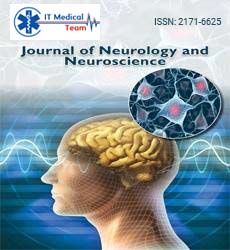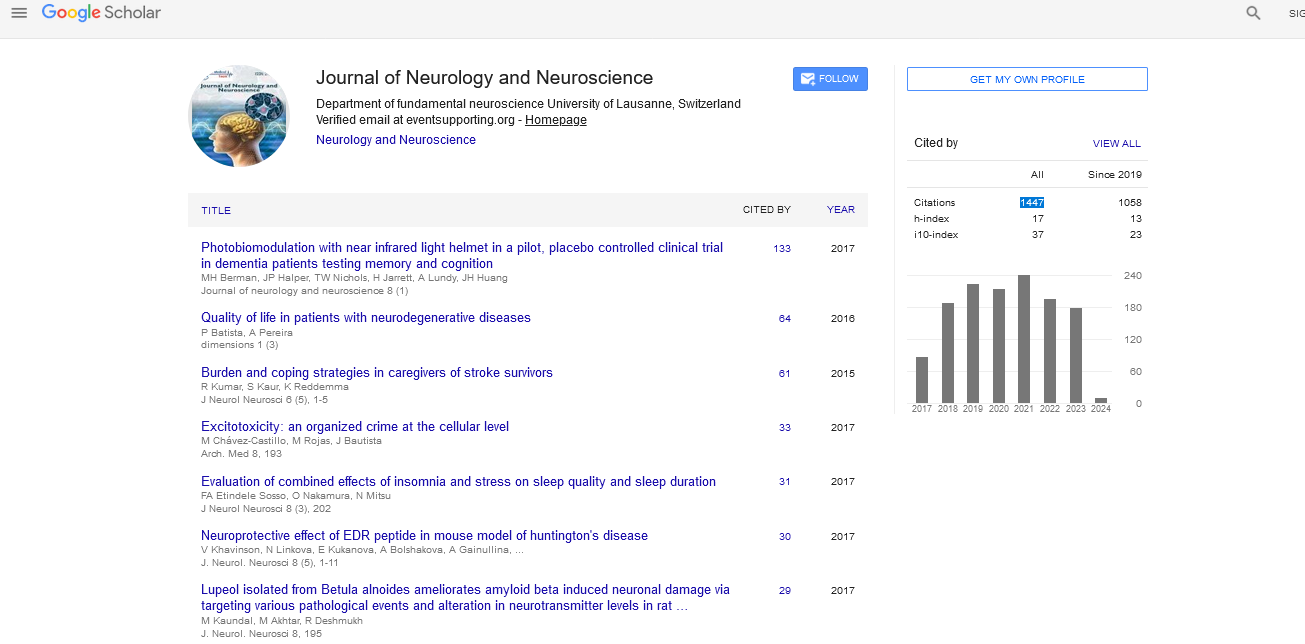Short Communication - (2025) Volume 16, Issue 3
Inflammatory Markers and Microhemorrhages in Cavernous Malformation Progression
Neonal Remin*
Department of Medicine, Community Health Center Krapina, 49000 Krapina, Croatia
*Correspondence:
Neonal Remin, Department of Medicine, Community Health Center Krapina,
Croatia,
Email:
Received: 27-May-2025, Manuscript No. ipjnn-25-15712;
Editor assigned: 29-May-2025, Pre QC No. P-15712;
Reviewed: 12-Jun-2025, QC No. Q-15712;
Revised: 17-Jun-2025, Manuscript No. R-15712;
Published:
24-Jun-2025
Introduction
Cerebral Cavernous Malformations (CCMs) are clusters of abnormally dilated capillaries in the brain or spinal cord, prone to blood leakage and hemorrhage. Genetic loss of CCM1 (KRIT1), CCM2, or CCM3 (PDCD10) predisposes patients to lesion formation via a two hit mechanism in brain endothelium. These CCM proteins have crucial roles in maintaining endothelial cell junctions, redox homeostasis, and limiting inflammatory signaling. Even heterozygous deficiency of KRIT1 or CCM2 causes increased endothelial permeability and oxidative stress, making vessels hyper responsive to inflammatory stimuli. This low-grade inflammation fosters leukocyte infiltration and edema and may prime new lesion formation. In CCM3-deficient models, inflammation is marked by activation of NF κB signaling in brain endothelium and perilesional microglia. Genetic deletion of IKKβ (a key NF κB kinase) paradoxically increased mortality and lesion complexity in Pdcd10 (CCM3) knockout mice highlighting that perturbing inflammatory signaling can worsen CCM progression in chronic stages [1].
Description
In a cohort of 85 CCM patients, a cluster of five pro inflammatory cytokines—IL 2, IFN γ, TNF α, IL 1β, and IL 6 defined a “high inflammatory state.” Patients in this group were significantly more likely to experience seizures, multiple lifetime hemorrhages, and during follow up showed increased rates of lesion growth, new lesion formation, or symptomatic hemorrhage (P < 0.05). In a subset of 49 patients followed prospectively, those in the “high” group had a hemorrhage or growth rate of 0.312 events/patient year, compared to 0.05 in the “low” group a ~6 fold increased risk (RR ˜ 6.74, P < 0.03). CRP (C Reactive Protein) is elevated for up to a year post hemorrhage. Along with transcriptomic evidence implicating its receptor FCGR2B in CCM lesion neurovascular units, CRP is a persistent acute phase marker. Lower plasma sCD14 levels were seen in patients after symptomatic hemorrhage and predicted risk of re bleeding; sCD14 may reflect inflammatory modulation via Toll like receptor pathways. VEGF (Vascular Endothelial Growth Factor) lower plasma VEGF found in patients with recent bleed; paradoxically acts in both angiogenesis and permeability contexts. IL 10 and sROBO4 negatively correlated with MRI iron deposition using QSM; lower IL 10 and ROBO4 associate with greater lesional iron load and symptomatic hemorrhage risk [2].
Novel composite biomarker models have shown encouraging sensitivity/specificity. A diagnostic model combining sCD14, VEGF, CRP and IL 10 predicted symptomatic hemorrhage with ~76% sensitivity and ~80% specificity. A prognostic model with sCD14, VEGF, IL 1β, and sROBO4 predicted hemorrhage within the coming year with ~86% sensitivity and ~88% specificity. These points toward the potential for a clinically actionable, minimally invasive blood biomarker panel. Micro hemorrhages in CCM correlate with iron accumulation visible on QSM MRI. Lesional QSM values rise following symptomatic hemorrhage, and even in background brain regions before new lesions form reflecting subclinical leakage and progression. Similarly, dynamic contrast-enhanced perfusion MRI demonstrates elevated vascular permeability in both lesions and background tissue in familial cases and after hemorrhage in line with inflammatory disruption of the blood brain barrier [3].
Studies show that lower plasma IL 10, CCL2/MCP 1, and ROBO4 correlate negatively with lesion iron burden measured by QSM in patients who bled within the past 12 months (r ˜ –0.6). This suggests that suppressed anti-inflammatory or vascular stabilizing markers may lead to greater microhemorrhagic iron deposition. KRIT1, CCM2, and PDCD10 proteins normally suppress inflammation, oxidative stress, and endothelial permeability. Their loss leads to NF κB activation, elevated ROS, and endothelial barrier breakdown. This promotes leukocyte extravasation, cytokine production, and an inflammatory microenvironment that fosters lesion progression and fragility. Loss of CCM3, for instance, dramatically alters endothelial cell responses. Mice lacking endothelial IKKβ on a CCM3 knockout background show increased microglial activation and lesion complexity—highlighting chronic inflammatory dysfunction as a major driver of progression during maturation phases of CCM disease [4].
Inflammatory “second hits” such as systemic infection, minor injury, or vascular stress may provoke local inflammation in genetically defective endothelium, triggering both micro bleeds and new lesion formation. Radiation-Induced Cavernous Malformations (RICMs) share this mechanism radiation causes endothelial injury, inflammation, and subsequent lesion formation resembling CCMs. Loss of CCM proteins in both endothelium and hematopoietic compartments is required to reproduce permeability phenotypes. Wildtype marrow transplanted into endothelial-specific KRIT1 knockout mice rescues barrier function, whereas the inverse does not—implicating inflammatory cells in lesion development [5].
Conclusion
The identified inflammatory and angiogenic plasma biomarkers can stratify patients into high risk vs low risk groups, with implications for surveillance intensity, surgical timing, and therapeutic targeting. Multi-site clinical validation (e.g. R01 NS114552) is underway to refine generalizable biomarker panels across genotypes, ages, and lesion locations. Given the role of NF κB and inflammatory signaling in lesion progression, targeting these pathways pharmacologically is compelling. However, as evidenced in animal models, broad NF κB inhibition (e.g. IKKβ deletion in endothelium) may exacerbate disease—suggesting that precision targeting of specific inflammatory nodes (e.g. NLRP3 inflammasome, IL 1β or TNF pathways) may be more promising. Systematic reviews have identified dozens of differentially expressed circulating microRNAs in CCM and other hemorrhagic neurovascular disorders. Subsets are shared across diseases, potentially reflecting common inflammatory and angiogenic pathways, and may serve as diagnostic or therapeutic targets. Emerging “multi omics” approaches triangulate lesional transcriptomes, plasma proteomics, and miRNA profiles to nominate mechanistically plausible biomarkers with higher predictive value for hemorrhagic risk
Acknowledgment
None.
Conflict of Interest
None.
References
- Parthasarathy V, Cravero K, Deng J, et al. Circulating plasma IL-13 and periostin are dysregulated type 2 inflammatory biomarkers in prurigo nodularis: a cluster analysis. Front Med. 2022;9:1011142.
Google Scholar, Cross Ref, Indexed at
- Girard R, Li Y, Stadnik A, et al. A roadmap for developing plasma diagnostic and prognostic biomarkers of cerebral Cavernous Angioma with Symptomatic Hemorrhage (CASH). Neurosurg. 2021;88(3):686-697.
Google Scholar, Cross Ref, Indexed at
- Riolo G, Ricci C, Battistini S. Molecular genetic features of cerebral cavernous malformations (CCM) patients: an overall view from genes to endothelial cells. Cells. 2021;10(3):704.
Google Scholar, Cross Ref, Indexed at
- Gerondakis S, Grumont R, Gugasyan R, et al. Unravelling the complexities of the NF-κB signalling pathway using mouse knockout and transgenic models. Oncogene. 2006; 25(51):6781-99.
Google Scholar, Cross Ref, Indexed at
- Maher MH, Treekitkarnmongkol W, Ghatak S, et al. An integrated multi‐omics biomarker approach using molecular profiling and microRNAs for evaluation of pancreatic cyst fluid. Can Cytopathol. 2025;133(4):e70008.
Google Scholar, Cross Ref, Indexed at





